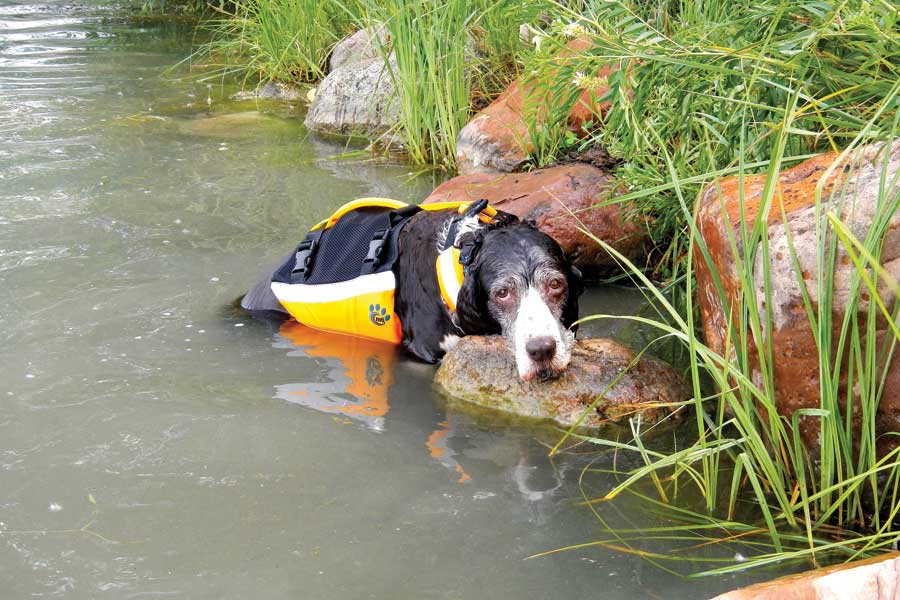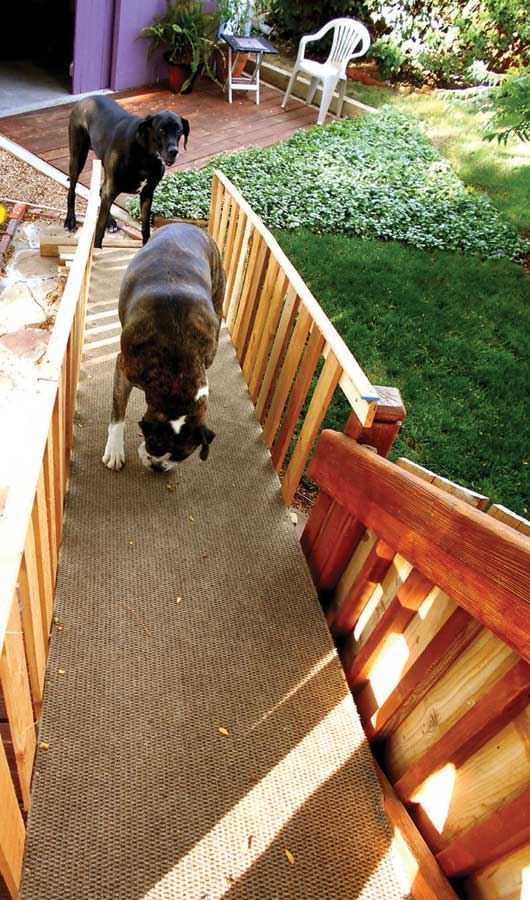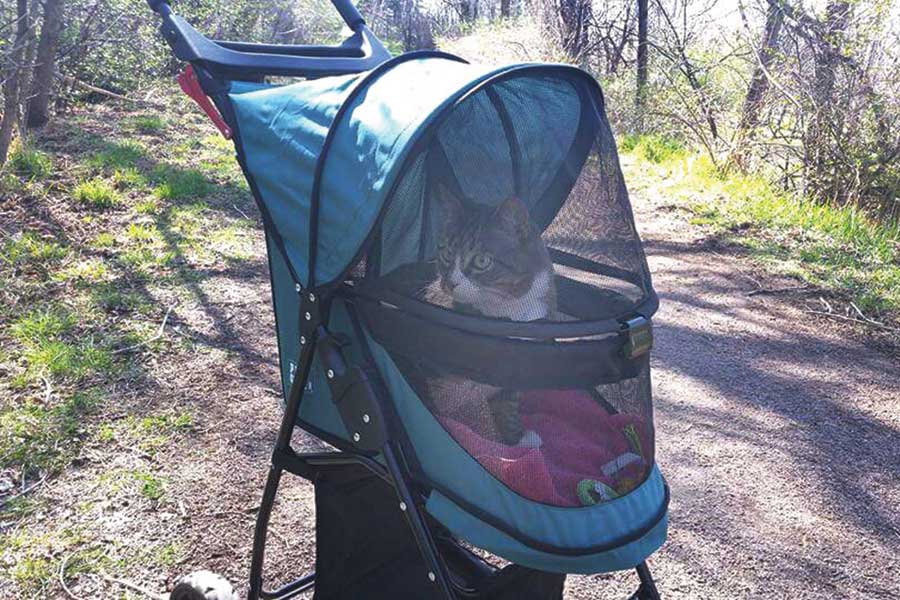New Tricks for Old Pets
27 Jun 2018
Simple changes can make a big impact in your pet’s golden years.
By Ruthanne Johnson Veterinarian Kathleen Cooney will never forget the old shepherd mix she helped several years ago during a home consultation. She watched as the dog circled the living room several times, each time stopping in front of her dog bed and staring at it for several long seconds before turning away and repeating her circuit across the hardwood floor. Cooney grabbed a carpet runner from the hallway and placed it in front of the bed. The dog immediately stopped pacing, walked to her bed, climbed in and laid down. Turns out the old gal had been anxious about slipping and falling on the hardwood floor as she stepped on her bed. The carpet runner gave her the traction and confidence she needed.
Keep ’em Mobile
Note your pet’s pathways, as well as its favorite activities and places to hang out. If paths cut across hardwood, tile or linoleum floors, which can be slippery for senior pets with weak muscles and joints, use carpet runners with a nonslip backing to provide stability. Carpet runners with a consistent, vibrant pattern can help lead visually-impaired pets in the right direction as well. Runners “should be everywhere,” Cooney says, “leading to the pet’s bed, at the base of stairs, on the stairs, to their food—anywhere they could use traction or visual support.”
Safe & Sound
As mental and physical acuity declines, pets become more susceptible to falls and traps. “It’s not uncommon for people to come home and find their dog has been trapped behind the toilet or under the furniture all day, super-stressed out and not doing their health any favors,” Cooney says. Baby gates can restrict access to problem spots. Check your yard for danger zones too, and block a pet’s access to swimming pools, fire pits, window wells and potential traps, like the area behind a shed or underneath a porch.
Comfort Zones
Senior pets sleep a lot, so their resting spots are important. Pet beds should be soft, easy to get in and out of, and located where the temperature is comfortable. Place one bed in each room your pet likes to frequent and set up a few sanctuary spaces where it can escape activity in your home. Pet beds should be against a wall, furniture or in a corner for support. One Boulder homeowner bought a rectangular pet bed with thick bolsters on two sides for her long-and-low basset hound when he turned 7. “He had a bed before, but it was just a pad without bolsters,” she says. “He loves his new bed. I think because the bolsters support his back.” She also gave him a blanket to snuggle under—a plush one for winter and a sheer one for summer.Easy Access
Position food and water bowls and litter boxes in convenient locations where your pet doesn’t have to use stairs. Use food and water bowls with nonslip bottoms and litter boxes with low sides. Older dogs with neck issues may prefer elevated bowls. Ramps provide safe access to the backyard, car or favorite napping spot. “The gentler the slope, the better,” Cooney says. For added security, cover the ramp with carpet or other nonslip material and add rails if needed.Cat-Scratch Fever
Floor-to-ceiling cat trees can be hazardous for elderly cats. A ramp leading to a tabletop or wide window ledge creates a fulfilling and safer perch. For cats’ claw-sharpening, use lower scratching posts and horizontally inclined scratching pads.












